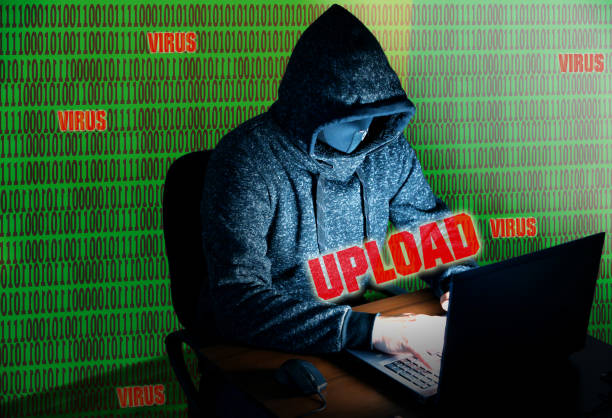What would you do if someone locked you out of your own computer?
Ransomware is a type of computer attack that can do just that. It makes your files unreachable until you pay a fee, known as a ransom.
Over the years, some of the biggest ransomware attacks have happened, affecting millions of people and businesses. These attacks have taught us important lessons about cybersecurity. They have changed how we protect our data and respond to threats.
Understanding these attacks helps us be more prepared and safe in the digital world.
Increased Investment in Security Infrastructure
In recent years, ransomware attacks have pushed businesses to spend more money on security. Companies are now buying better software and tools to protect their data. They want to stop hackers from getting in and locking their files.
Many businesses also train their workers on how to stay safe online. People learn to recognize suspicious emails and links that could lead to attacks.
By improving these cybersecurity practices, businesses hope to keep their information safe. They aim to respond quickly if an attack does happen.
Investing in security helps everyone feel more secure in today’s digital world. It is a smart move to protect important files and information from criminals.
Regular Data Backups
Regular data backups are very important for protecting your files from ransomware. When you back up your data, you make a copy of your important information. This way, if a ransomware attack happens, you can recover your files without paying any money.
Backing up can happen daily or weekly. You can use external drives or cloud services to store your backups safely. Make sure to test your backups to ensure they work.
If you follow these steps, you can protect yourself from losing important information. Remember, good data backups help with ransomware recovery and keep your files safe no matter what happens. Stay prepared and secure!
Employee Training and Awareness
Training employees is a key step in fighting ransomware. When people learn about the risks, they can protect themselves and their work.
First, companies should teach workers how to spot phishing emails. These emails trick people into clicking bad links. Workers should know not to open attachments from unknown senders.
Second, employees should learn about strong passwords. Using long and unique passwords helps keep accounts safe. Regular password changes are also important.
Lastly, holding practice drills can help everyone understand what to do if a ransomware attack happens. Training makes workers more aware and ready. When everyone knows how to stay safe, it helps protect the whole company from cyber attacks.
Incident Response Plans
An incident response plan helps a company react quickly to ransomware attacks. Companies create these plans to know what to do when an attack happens.
First, they find out where their biggest risks are by doing risk assessments. This means they look for weak spots in their systems that hackers could use.
Next, the plan shows who is in charge during an attack and what steps to take. Employees learn their roles, so everyone knows how to help. Practicing the plan is important too. When people practice, they get better at responding.
A good incident response plan helps companies protect their data and recover faster when attacks occur. Being prepared makes everyone feel safer.
Zero Trust Architecture
Zero Trust Architecture is a security approach that assumes no one is trusted by default. It means that every user and device must prove their identity before they can access important information.
Companies set up strict controls to verify anyone trying to enter the network. Even if someone works for the company, they still need to show their credentials. This helps keep hackers out.
Businesses also limit access to sensitive data only to those who need it. Regularly checking user activity helps spot unusual behaviors.
By using Zero Trust Architecture, companies can better protect their data and reduce the risk of ransomware attacks. This way, everyone stays safer in the digital world.
Collaboration and Information Sharing
Collaboration and information sharing are important in fighting ransomware. When companies work together, they can share what they know about attacks. This teamwork helps everyone stay safer.
Businesses can learn from each other’s experiences and find better ways to protect their data. For example, if one company spots a new type of attack, they can tell others. This quick sharing helps other companies fix their issues before getting attacked.
Teams can also join groups to stay updated on security trends and advice. By sharing information and supporting each other, companies can make the digital world a safer place for everyone. Together, they become stronger against cybercriminals and ransomware threats.
Adoption of Multi-Factor Authentication (MFA)
Multi-Factor Authentication (MFA) adds another layer of safety for your accounts. With MFA, you need more than just a password to log in.
After entering your password, a second step is required. This can be a code sent to your phone or an approval from an app. These extra steps help keep your data safe.
Even if someone steals your password, they cannot get into your account without the second factor. Using MFA makes it harder for hackers to break in. Many companies now require MFA for their workers. It helps keep important information protected.
Remember, using MFA is a smart way to defend against ransomware and other cyber threats! Always choose safety first!
Regulatory Compliance and Standards
Regulatory compliance and standards help keep businesses safe from ransomware. These rules say what companies must do to protect their data. They help everyone follow the same safety guidelines.
When companies follow these rules, they reduce the chances of getting attacked. Some rules include using strong passwords, having good data backups, and training workers on online safety.
Companies that follow standards show they care about security. They build trust with customers too. If a business gets hacked and does not follow rules, it can get into big trouble.
Staying compliant not only protects data but also helps everyone feel safe. Following these standards is a smart choice for any company!
Lessons Learned from the Biggest Ransomware Attacks
The biggest ransomware attacks have taught us that being safe online is very important. By learning from these attacks, companies can take steps to protect their data better. Using strong security methods, training workers, and following rules help keep information safe.
Together, we can all be more aware and prepared against cyber threats. Staying alert is the best way to avoid falling victim to these dangerous attacks.
Make sure to check out the rest of our blog for more tips on various topics.




